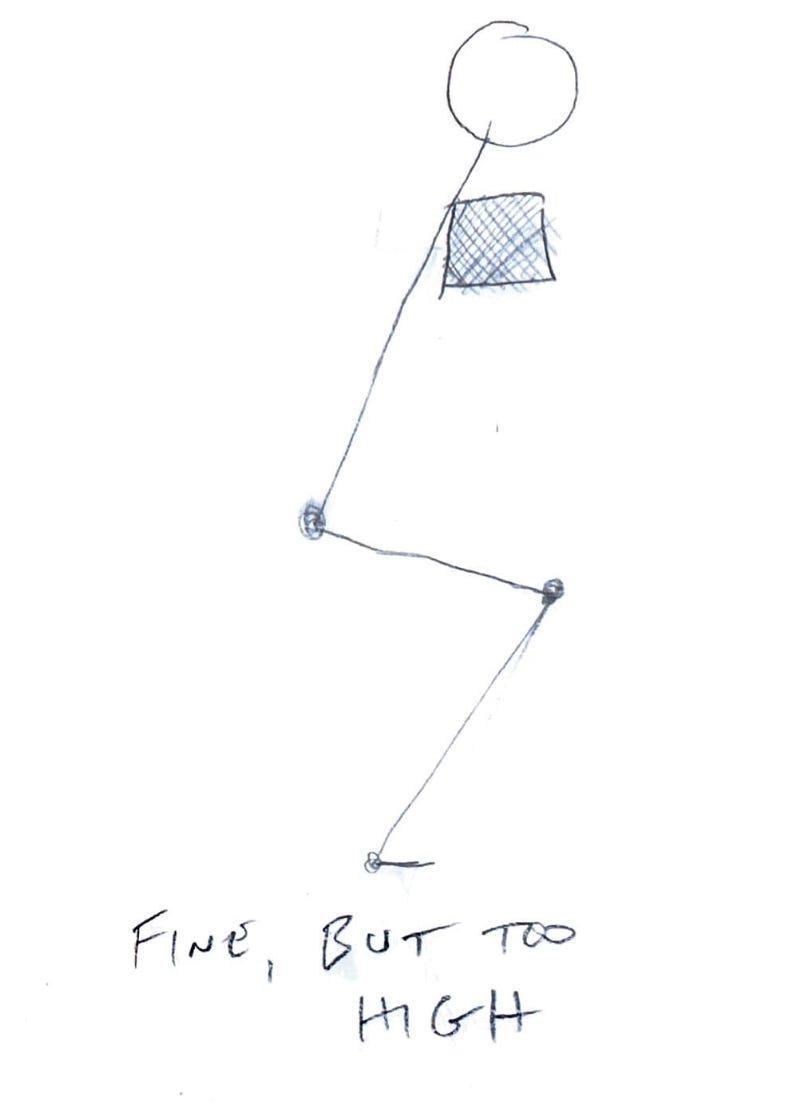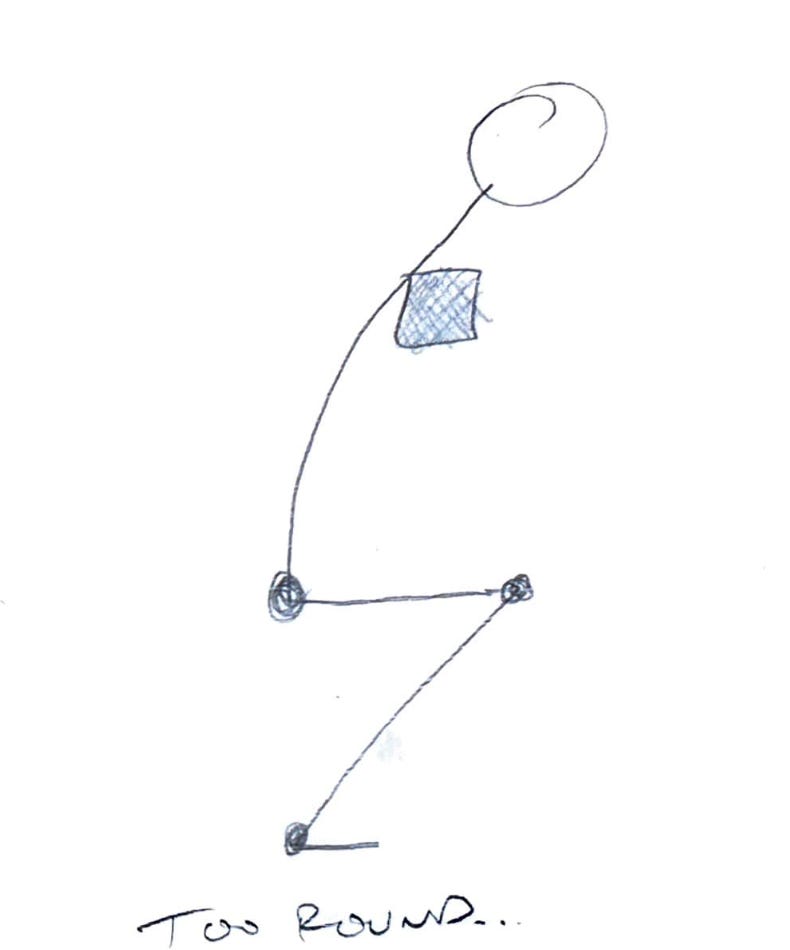Exercise is Medicine: Progression 101
When exercising, "progress" is the name of the game. But how to progress? Improving range of motion is one of many ways and is the topic of our first lesson in a series on exercise progression.
“What do you want to be when you grow up?”
For Young Tyler, the answer was many different things. However like most boys my age the most common answer was, undoubtedly, fighter pilot. I could fly jets, be called “Maverick” or something, listen to great music… what could be cooler than that?! And if you had asked me “why fighter pilot?” this is exactly what I would’ve said… Super Sonic. Bomber Jackets. Kenny Loggins. Nothing Cooler.
Indeed, fighter pilots are cool. But what I realize now is that my admiration for the profession dove much deeper than a perceived level of “coolness.” I wanted to be a fighter pilot because I wanted to emulate the people worthy of flying military-grade sound-barrier-breaking aircraft. This person must be smart, brave, dependable, and disciplined. These qualities established the coolness… these qualities were what I truly desired.
Exercise is similar.
In my previous life as a strength coach, I noticed an interesting phenomenon when interviewing new/potential clients. When I asked why they wanted to exercise, some combination of the following would be offered:
“I need to lose 20 pounds.”
“I want to bench 225”
“I want to get off my blood pressure meds.”
“I want to tone up and lose fat.”
All of these are worthwhile and noble goals. Though, however well intentioned, these folks were distracted by the same thin shiny veneer of effects and outcomes… much like Young Tyler and fighter pilots. It’s not the outcome we truly desire, but the qualities that make the outcome possible: discipline, tenacity, etc. It’s these qualities — the causes, so-to-speak — that are most desirable… not merely their effects.
Almost always these qualities were expressed in other arenas of their lives, but for some reason there existed a disconnect in their relationship with “working out.” So, it is on this aspect of exercise — the process — that we ought to focus… and it is from these qualities we are made able to progress.
This shift in focus leads to a shift in mindset: instead of having to exercise because I need to lose 20 pounds… I exercise because I am a consistent and disciplined person. I exercise because that’s who I am.
As a result, exercise becomes both a vehicle of progression and an expression of it. And it is from this place that we begin today’s lesson…
Exercise Progression 101
Let’s get organized. What qualities define an exercise?
Movement
Through a certain range
At a certain speed
With a certain load
Now, from these qualities let’s derive parameters that are modifiable:
ROM (range of motion)
Speed (fast or slow)
Load (a lot or a little)
Reps (a lot or a little)
Rest (a lot or a little)
Skill (trying different stuff)
These will serve as our guidelines for progression; our variables with which to tweak and tinker. Today, let’s talk about “ROM.”
What is ROM? Range of motion refers to the extent of movement possible at a joint or joints. There is active (AROM) and passive (PROM). Passive refers to a joint being moved through a ROM, whereas active refers to a joint moving through a ROM. In the medical world, this can be helpful in distinguishing pathology.
For instance, say your shoulder hurts. If AROM is diminished or painful but PROM is intact, this may point to a muscular or tendinous injury. However, if both AROM and PROM are diminished, this may point to a problem within the joint capsule itself.
But I digress…
Generally speaking, more weight through a full ROM = best results. This is because life is a full ROM sport. Now the question becomes — how to attain full ROM?

Use Your Targets
In my previous coaching career, when working with beginners I found that achieving full ROM was usually a challenge. Take the squat, for instance. Many times, newcomers lacked the technique, mobility, and strength to squat deep enough with good form. However, all could maintain good form through some ROM. So, let’s progress.
First, we must define our goal ROM. In the squat, this is referred to as “depth.” Minimum squat depth is defined as the crease of the hips below the knees. Anything deeper than this is preferred, but not required.
Second, we must define the range through which we can move with good form. Turning back to our squat, let’s say we can maintain proper form at this depth:

But when trying to hit proper depth we lose form:

To progress, use a box as a target — a variation of the squat called a “box squat.” You could also use a bench. Do this for a couple weeks, then lower the box. Drop the weight if need be, then build it back up over the course of another couple of weeks. Rinse and repeat until you can hit depth. Then, to fully graduate, take away the box. The secret is patience and consistency — keep showing up.
Use What You Got
Is there required ROM in all exercises?
Yes and no.
Take the deadlift. Generally, the standard is to pull from the floor. However, depending on the person and their goals, it may be worthwhile to opt for a different standard.
Using the same concept as described above, we train the hinge pattern via the deadlift using boxes. We lower the box height appropriately over the course of weeks. Say you feel great pulling from 4” boxes. However, when you try pulling from the floor, it feels awkward and you can’t get into a good position. Nothing has worked and we’ve tried it for an adequate amount of time. What do we do now?

Just pull from the 4” boxes. Or go with the trap bar, which allows for an easier starting position. Find what works for you. Build a rhythm and keep it.
Full ROM may be better than partial ROM. But, good is always better than perfect.
Use Your Head
Injuries, tweaks, aches, and pains are inevitable regardless of whether or not you lift weights. What do we do when these come a-knocking? Train around them by playing around with ROM.
In Texas, I interned for a company as a sports performance specialist. While there, I had the opportunity to work with guys preparing for the NFL combine. The combine consists of multiple strength, speed, and skill events. One of these events is the 225 pound bench press. The goal is to lift it as many times as you can. The more reps you get, the better you score.
High-volume and high-intensity sessions dominated the combine training program. The bench press was obviously a large part of this program. Not surprisingly, there were a couple guys who tweaked their shoulders. Usually the answer is to just do something else and rest the shoulder for a bit. However, because the bench press is required for the combine, and the only way to get better at bench pressing is to bench press, rest was not an option.
The solution was to shorten the ROM to one that was pain-free. Instead of bringing the bar to their chest, guys performed “board presses.” Two or three 2x4s were stacked on the chest, effectively shortening the distance to press the bar as well as keeping the shoulder in a more advantageous (and pain-free) position. This solution allowed guys to get in solid training time while giving their shoulders time to heal.
This same concept, applied to the professional, can be applied to the beginner as well.
Coming Up Next
This is part 1 of a series on exercise progression. Next time we’ll talk about speed: moving weight fast, slow, or both. These posts will be scattered throughout my regular writing schedule, mixed in among other future articles.
In the meantime, what’s your relationship with exercise? Did you find this article helpful? Will you incorporate some of these concepts moving forward? Let me know in the comments!
*******
Thank you for reading Building Docs. If you enjoyed this article please consider liking, sharing, and/or subscribing. All three will help this publication grow — one of my main goals for the new year. Thanks for your support!





Love this! My relationship with exercise is to feel strong in mind, body, and spirit, and then allow the physical results to follow.
Informative article - I used to schedule exercise into my daily calendar and I've lost that discipline over the years. Maybe I should blast "Danger Zone" as that is a great motivator! As I age, the importance of keeping exercise in my routine is becoming more evident with each passing year, especially ROM. I look forward to reading more.
Also....that's one of my favorite "Young Tyler" pictures!